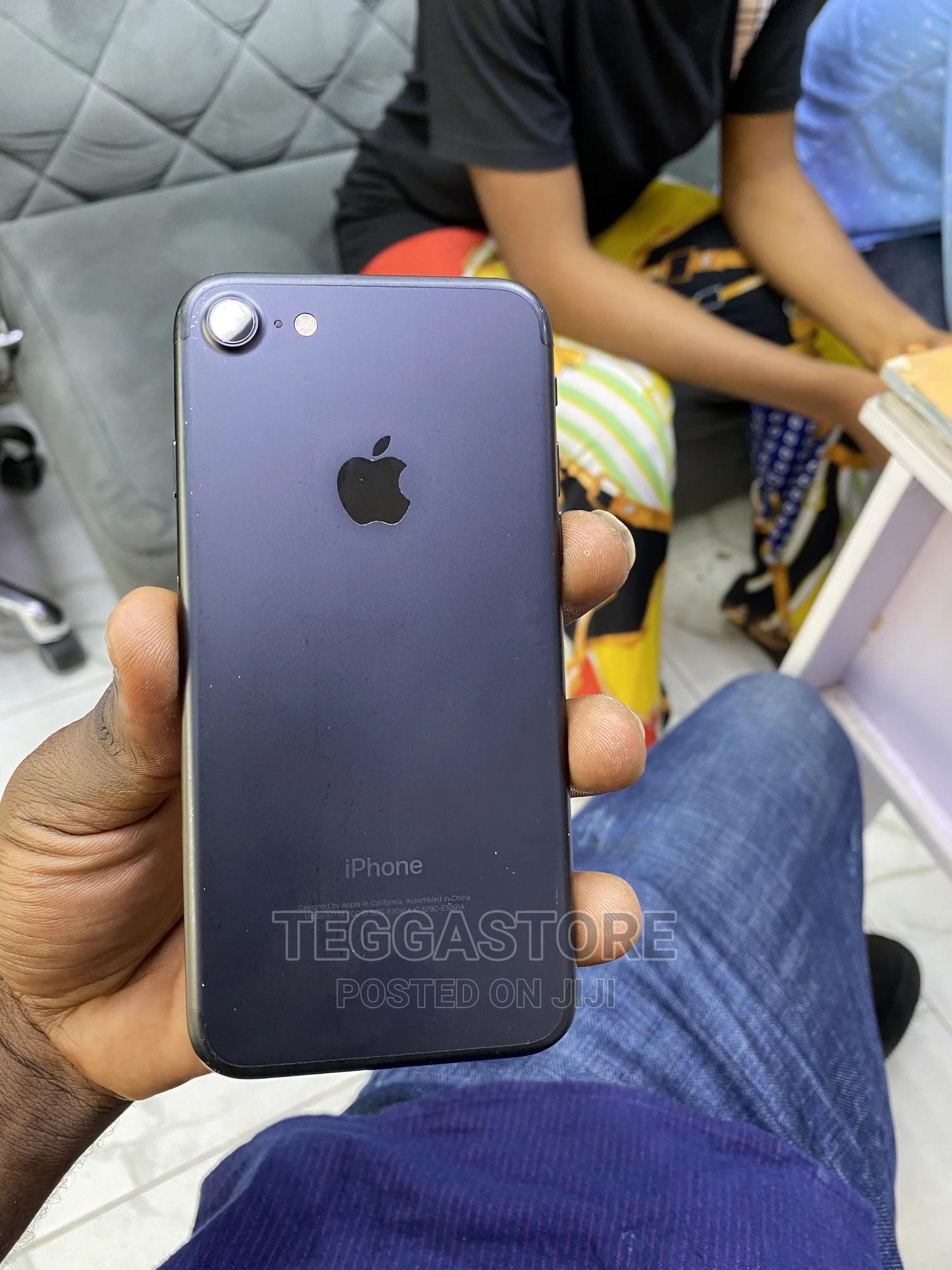IPhone 7 Key Specs
Screen size: 4.7 inches
Resolution: 750 x 1334 pixels, (~326 ppi density)
Dimension: 138.3 x 67.1 x 7.1 mm
Weight: 138 g
RAM: 2GB
Storage: 32/128/256 GB
Processor: 2.34 GHz quad-core (Apple A10 Fusion)
Apple Pay (Visa, MasterCard, AMEX certified)
Rear Camera: 12-Megapixel
Front Camera: 7-Megapixel
4G LTE: yes
Sim: Nano-SIM, Single-SIM
Os: iOS 10.0.1, upgradable to iOS 11.3
Fingerprint scanner: yes (home button)
Battery: 1960 mAh, non-removable
iPhone 7 Design
There’s no denying that the iPhone 7 is stunning, with an aluminum unibody with curved edges and 2.5D glass – a fancy term for the curved edge of the –IPhone 8– glass that helps the phone sit in your hand more comfortably while also providing a better experience when swiping from the side of the display.
There’s no avoiding the fact that the iPhone 7 and 7 Plus appear almost identical to the iPhone 6 and 6 Plus from 2014. They’re now water resistant, which is wonderful, but they’re not entirely waterproof – put them in a meter of water for more than 30 minutes and things might not go as planned.
Although Samsung’s Galaxy S7 and Note 7 are technically more water resistant, I believe it’s more of a push – you can now get these phones wet without fear of disaster, which is a significant victory.
You should probably acquire a case anyhow if you want to go snorkeling with your iPhone.
Apart from the water resistance, the 6 and 7 have three major external differences: On the matte black and glossy jet black models, the antenna lines on the back have been adjusted and tinted to blend in with the body, which is a pleasant enhancement.
(On the silver, gold, and rose gold models, the antennas are a drab gray color; Apple claims there are color restrictions.) Second, the camera bump has been increased and more elegantly curved into the back case, which looks especially good on the single-camera phone.
iPhone 7 Display
Most apps won’t notice, but the display now supports a larger spectrum of colors, which is most noticeable when looking at images shot with the iPhone 7’s camera, which now supports a wider range of colors as well.
On the iPhone 7 display, photos taken with the iPhone 7 seem insanely excellent; you can notice the difference between a 7 photo and a 6S photo almost quickly. For the time being, that’s the only location where the additional screen will be useful, but it’s another spot where app developers may take advantage of the powerful new technology.
Instagram has already declared that it will be updating to accommodate broad color; perhaps, others will follow suit.
Camera of iPhone 7
For iPhone 7, Apple also improved its FaceTime HD camera. The upgraded 7-megapixel sensor (up from 5 megapixels on the iPhone 6s) also supports broad color, resulting in crisper and more vibrant selfies.
iPhone 7 Hardware and Processor
The iPhone 7 is equipped with Apple’s latest CPU, the A10 Fusion, which, like other Android processors, has four processing cores divided into two pairs. The first is a pair of high-performance cores, while the second is a pair of energy-efficient cores.
Apple has finally given in to public pressure and removed the 16GB option. There has long been a complaint that 16GB isn’t enough storage for a current, flagship handset, so seeing 32GB as the new starting point is great.
The other storage options have also increased in size, and if you acquire a 128GB or 256GB model, you’ll be able to get the iPhone 7 in its extra-shiny Jet Black finish, which is unfortunately not available in 32GB.
Cool Performance of iPhone 7
The new A10 Fusion chip, another innovation from Apple’s industry-leading chip design team, is featured in the iPhone 7. It has a four-core design, with two high-performance cores and two low-consumption cores that require less battery power during ordinary operations.
Of course, it’s lightning quick, with early benchmarks indicating that the A10 Fusion outperforms the A9X in the iPad Pro. However, in my extremely mundane day-to-day Twitter, Facebook, Gmail, Slack, and Safari usage, the iPhone 7 Plus wasn’t significantly faster than the A9 chip in the iPhone 6S Plus, owing to the fact that I wasn’t pushing the CPU hard enough to utilise the high-performance cores.
Battery and Touch ID
Apple’s boost in battery life for the iPhone 7 isn’t quite enough. It includes a non-removable battery of 1960 mAh, and beneath the iPhone SE’s 4-inch screen is the Home button, which houses the Touch ID sensor for unlocking the smartphone, purchasing apps, and using Apple Pay.
How much is iPhone 7 Price in Nigeria
In Nigeria, the price for the 32GB/2GB variant starts at 100,000 Naira. The price of the 128GB iPhone 7 starts at 120,000 Naira.
In Nigeria, however, the iPhone 7 (256GB) starts at 150,000 Naira.
